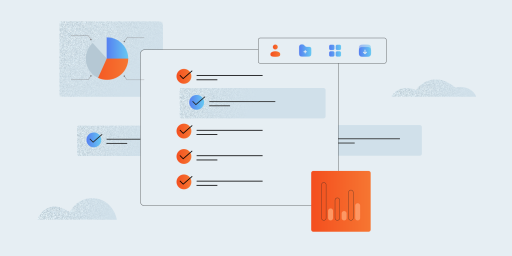One of the multifaceted types of testing in software development is stress testing. This article reveals its specifics.
Stress Testing verifies the reliability and stability of software solutions. It measures their robustness and capabilities for error handling under extreme conditions.
Besides testing the standard operating points, the developer evaluates software performance under extreme conditions to ensure it won’t crash under crunch situations. Thus, stress testing helps find out the limits at which the software or hardware breaks. Then the system can be optimized in order to avoid breakdown. Additionally, future software scalability and resources needed can be planned.
Why Stress Testing is Needed?
The reasons why a site or an application can attract many visitors can be variable, planned, as well as unexpected.
An eCommerce platform can, for instance, attract a high number of users on some sales. This is a planned situation; however, it’s necessary to get ready for it in advance and make sure that all the increased number of users making purchases won’t crash it.
It will not only confirm your site stability but also help prevent the loss of customers as well as revenue.
If you are a blog owner and suddenly some of your articles go viral, the number of visitors can quickly and unexpectedly go up. In case your website is not ready to handle the grown traffic, it will crash. That may result in a loss of reputation and subscribers.
Online educational platforms are nowadays widely spread and popular. Stress testing should become obligatory for them.
What is an example of stress testing? At certain periods a huge number of students or applicants may log in to the app or website, to check their results for instance, or to apply for a new course.
Such peak loads happen in a short duration; however, the breakpoint should be defined beforehand with the help of stress testing. It’s essential to work out and test the software behavior and recoverability scenarios in case of a crash.
The process of stress testing should not be ignored. It helps to timely ensure that a site or an app is robust enough to absorb the traffic spikes, both scheduled and unforeseen.
What Are the Characteristics of Stress Testing?
Stress testing can be called a merger of quantitative and qualitative testing, so it
- Combines non-functional and performance testing;
- Tests the software behavior under normal and abnormal scenarios;
- Evaluates software’s robustness to cope with the extreme possible load under unfavorable conditions;
- Focuses on the recoverability characteristic of the software, to ensure its smooth recovery, after the failure;
- Figures out the breaking limit;
- Ensures no loss or corruption of data after the software failure;
- Ensures the features of error handling and managing under heavy load, as well as responsiveness and throughput assessment.
Stress testing may be assumed a fierce version of load testing, since it includes excessive burdening of the software, along with other negative approaches such as simultaneous access of multiple users, limiting the resources, like space or memory, to break it.
What Are the Types of Stress Testing?
There are several types of stress testing, and we are going to look at them in more detail.
Distributed stress testing
This type of testing is typical for client-server systems, it is done across all server clients. A set of stress tests is distributed to all stressed clients to track the status of each. As soon as the client contacts the server, the latter starts sending data for testing. If the server does not get any signals back from the client machine, it should be further investigated for debugging.
This testing scenario is ideal for a night run. However, large server farms require more effective methods to identify stress failures for further investigation.
Product testing
Product stress testing is concerned with finding performance bottlenecks, faults related to network issues, and data locking and blocking in a software solution.
Transactional stress testing
This kind of testing is realized for two or more applications that run transactions between each other. It helps to optimize and fine-tune the system.
Systemic stress testing
It’s an integrated process of testing used for multiple systems running on the same server. It is aimed at finding defects related to data blocks between applications.
Analytical stress testing
It is used to test the system with nonstandard parameters, environments, or conditions that are improbable for a real scenario, yet require verification. It is used to find defects in the situations like:
- An unusually high number of users are logged at the same time.
- A virus scanner started simultaneously on all machines.
- A database has gone offline when accessed from a web resource.
- Large volumes of data are added to the database all at the same time.
Let’s further check how to do stress testing.
How to Perform Stress Testing?
Nowadays, stress testing can be performed easily, with little effort applied one gets a huge reward in the form of an up-and-running software solution. The 5 usual steps to follow are:
Planning
At this stage, the system info is collected to analyze the functionality of a web resource, transactions running, user paths, and some other parameters needed for test scenarios.
Creating automation test scripts
This step includes creating scripts for stress testing automation and data generation for stress scenarios.
Automated script execution
At this point, you run the stress testing automation scripts, setting the load for a definite time and storing the stress results. The load can also be adjusted in real-time.
Results analysis
Stress test results are carefully analyzed and bottlenecks are identified at this stage, which results in insightful reports, providing profound visibility into the data received.
Optimization
Based on the analysis performed, the system is fine-tuned, and its configuration can be changed and code optimized to meet the desired requirement and benchmarks.
The stability and reliability of the software under load conditions are often verified through the entire cycle running all over again.
Final Thoughts
Stress testing facilitates further software optimization to make it properly operate both in normal and abnormal conditions.
It is crucial for any site, application, or API to prevent failure under high traffic loads. It not only ensures the stability and recoverability of your software solution, but also potentially results in massive revenue and reputation savings.



